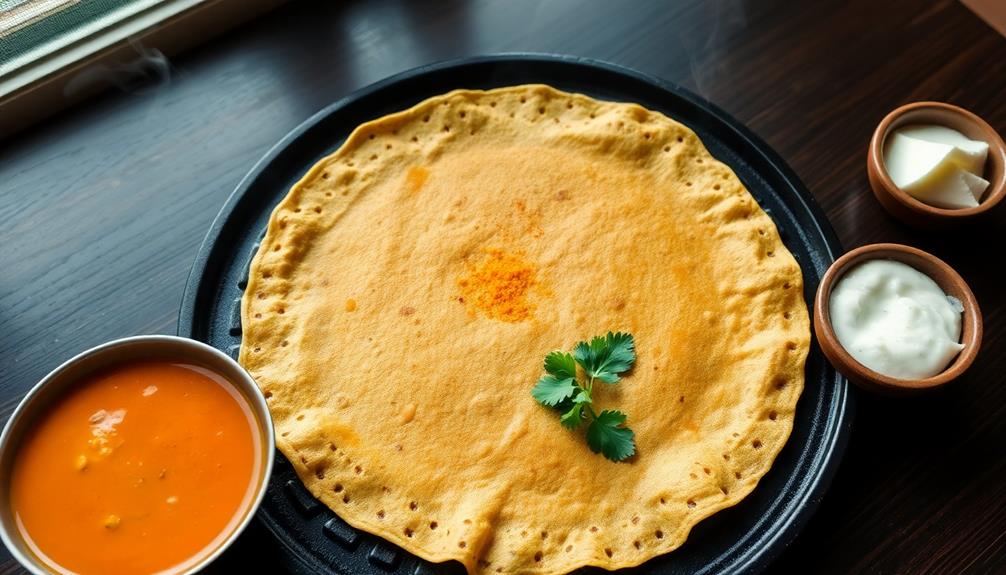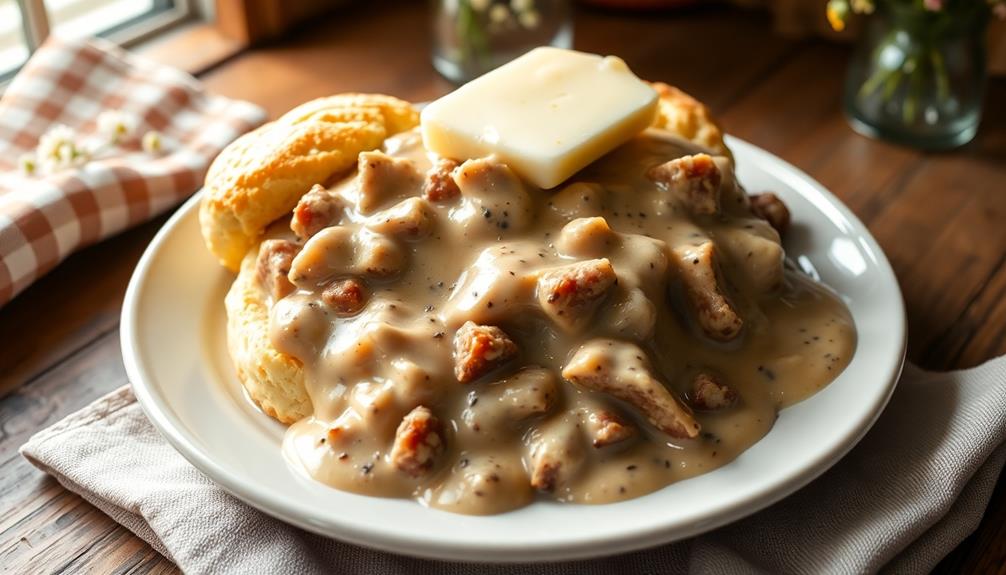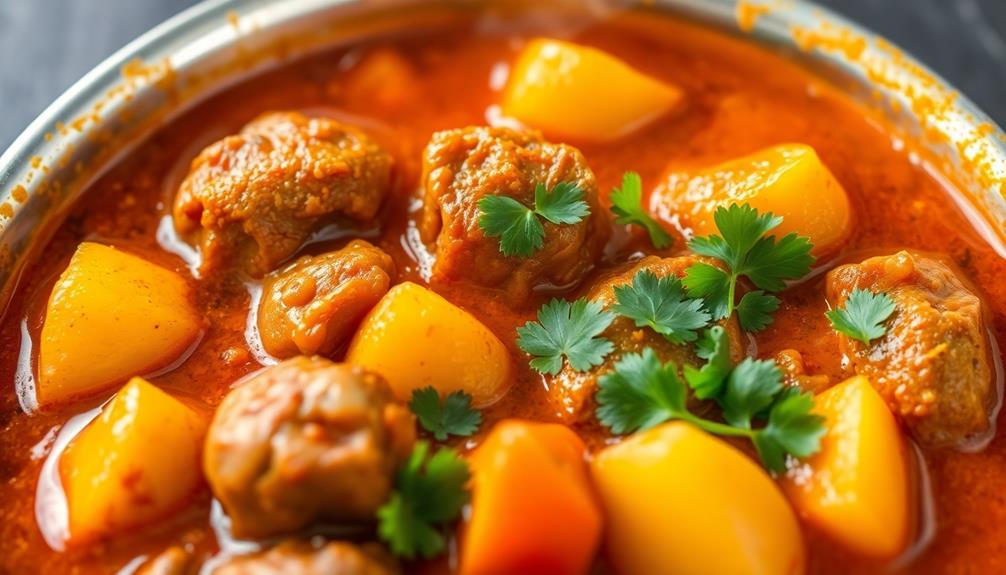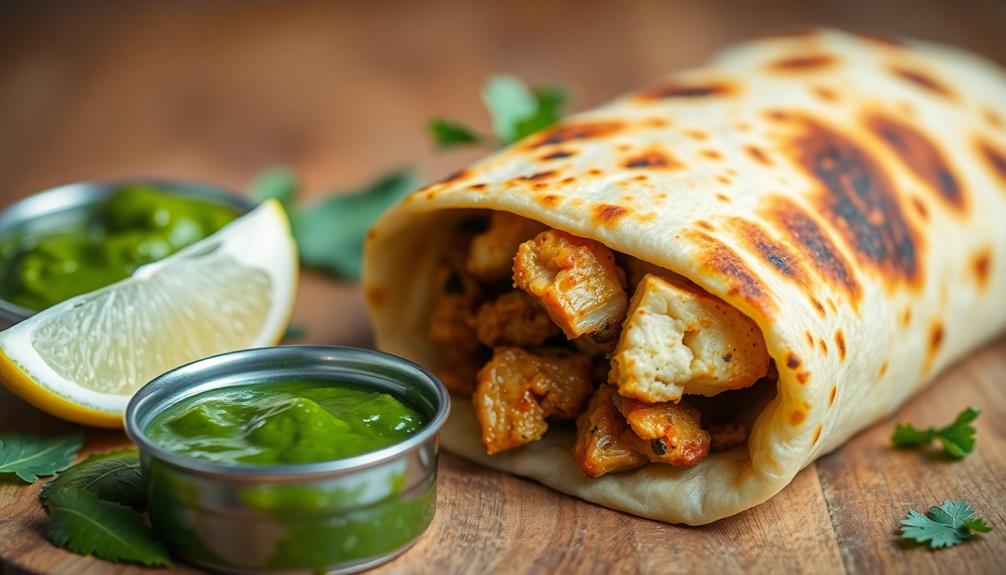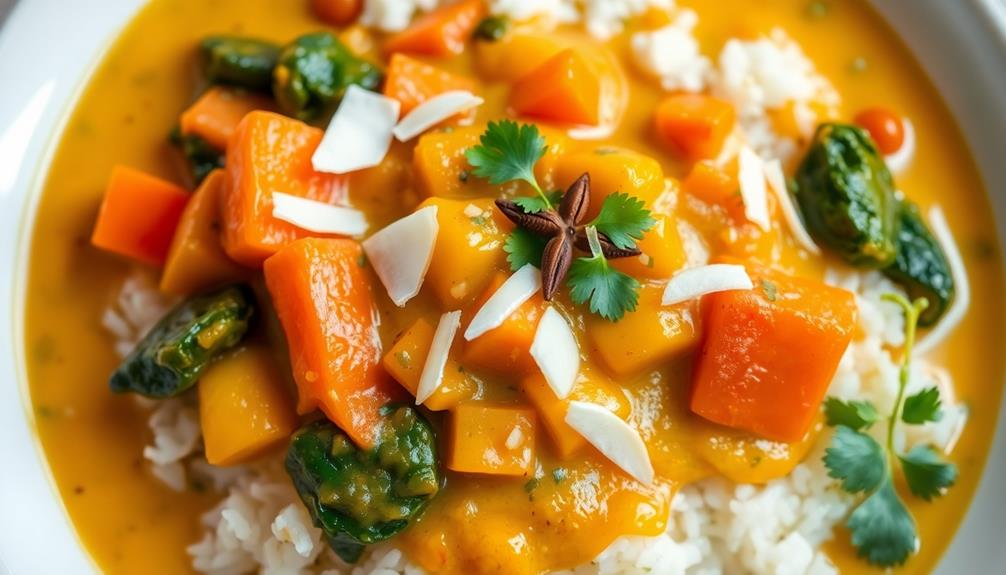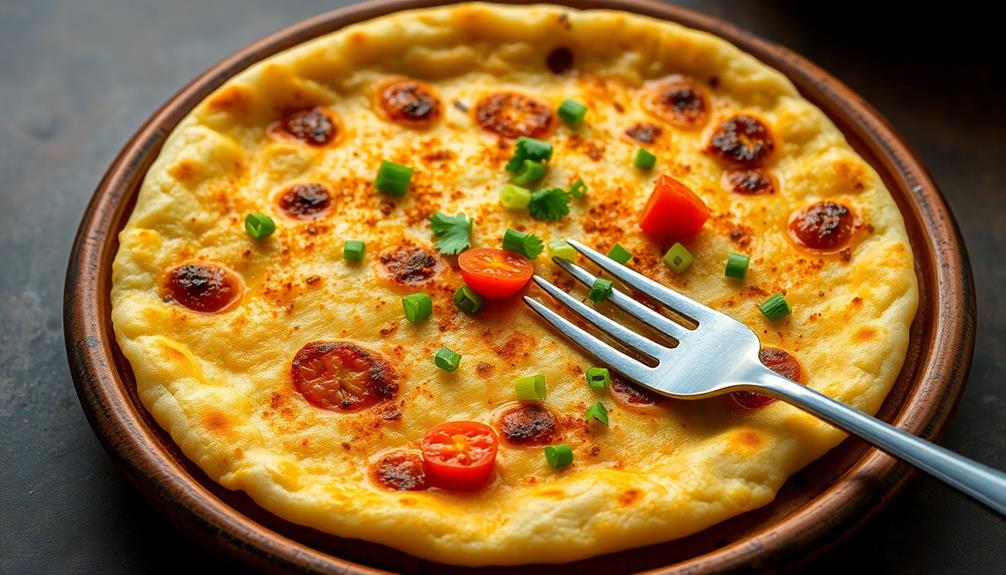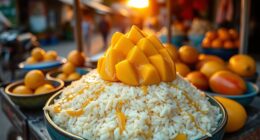Dosa is a delicious South Indian crepe-like dish you'll love to try! It's made from a fermented batter of rice and lentils, cooked on a hot griddle until golden and crispy. You'll find dosas served with various fillings and chutneys, making them perfect for any meal. To make your own, soak the ingredients, grind them into a smooth batter, and let it ferment overnight. Then, spread the batter thinly on a hot pan and cook until crisp. Don't worry if your first attempts aren't perfect – practice makes perfect! Dosas are not only tasty but also healthy and gluten-free. There's so much more to discover about this versatile dish.
Key Takeaways
- Dosa is a thin, crispy South Indian crepe made from fermented rice and lentil batter.
- Originating in ancient South India, dosa has gained popularity across India and internationally.
- The batter requires soaking ingredients for 4-6 hours and fermenting for 8-12 hours before cooking.
- Dosas are cooked on a hot griddle, spread thinly, and served with various chutneys and sambar.
- They offer health benefits, being gluten-free, low in calories, and rich in nutrients when made with whole ingredients.
History
Tracing the origins of dosa takes us back to ancient South India. You'll find that this crispy, savory pancake has been a staple food for centuries. Historians believe dosas first appeared around 1st century AD in the Tamil region. They've been mentioned in ancient Tamil literature, showing just how long they've been around!
As you explore dosa's history, you'll discover that it wasn't always made the same way. Originally, dosas were thicker and softer. Over time, people started making them thinner and crispier. This change happened as the recipe spread to different parts of South India.
You'll be interested to know that dosas were traditionally made from black lentils and rice. These ingredients were soaked, ground, and fermented to create the batter. The fermentation process is crucial, giving dosas their unique tangy flavor.
As you learn about dosa's journey, you'll see how it's become popular all over India and even internationally. Today, you can find many variations of this beloved dish, with different fillings and toppings. But the basic recipe still remains true to its ancient roots.
Recipe
Dosa, a popular South Indian dish, is a thin, crispy crepe made from fermented rice and lentil batter. This versatile and nutritious food is enjoyed for breakfast, lunch, or dinner, often served with various chutneys and sambar. Its light, tangy flavor and crispy texture make it a favorite among food enthusiasts worldwide.
To make authentic dosa at home, you'll need to prepare the batter in advance, allowing it to ferment overnight. This fermentation process is crucial for developing the characteristic flavor and texture of dosa. While traditionally cooked on a cast-iron griddle, a non-stick pan can also be used for convenience.
- 2 cups parboiled rice
- 1 cup regular rice
- 1 cup urad dal (black gram)
- 1/4 cup chana dal (split chickpeas)
- 1 teaspoon fenugreek seeds
- Salt to taste
- Water for soaking and grinding
- Oil or ghee for cooking
Soak the rice, urad dal, chana dal, and fenugreek seeds separately for 4-6 hours. Drain the water and grind them into a smooth batter, adding water as needed. Mix the batters together, add salt, and let it ferment in a warm place for 8-12 hours.
Heat a griddle or non-stick pan, pour a ladleful of batter in the center, and spread it in a circular motion to form a thin crepe. Drizzle oil or ghee around the edges, cook until golden brown and crispy, then flip and cook briefly on the other side. Serve hot with chutney and sambar.
For best results, maintain a consistent batter consistency and griddle temperature. Experiment with different ratios of rice and lentils to find your preferred texture. To make the dosa extra crispy, spread the batter thinly and use a little more oil.
If the batter is too thick, add water to achieve the right consistency. Remember that practice makes perfect, so don't be discouraged if your first few attempts aren't flawless – with time, you'll master the art of making delicious dosas.
Cooking Steps
Let's walk through the steps to make a delicious dosa!
You'll start by soaking rice and lentils overnight, then grinding them into a smooth batter.
After fermenting the batter until it's bubbly, you're ready to heat your griddle or pan and pour the batter, spreading it thinly to create that perfect crispy texture.
Step 1. Soak Rice and Lentils Overnight
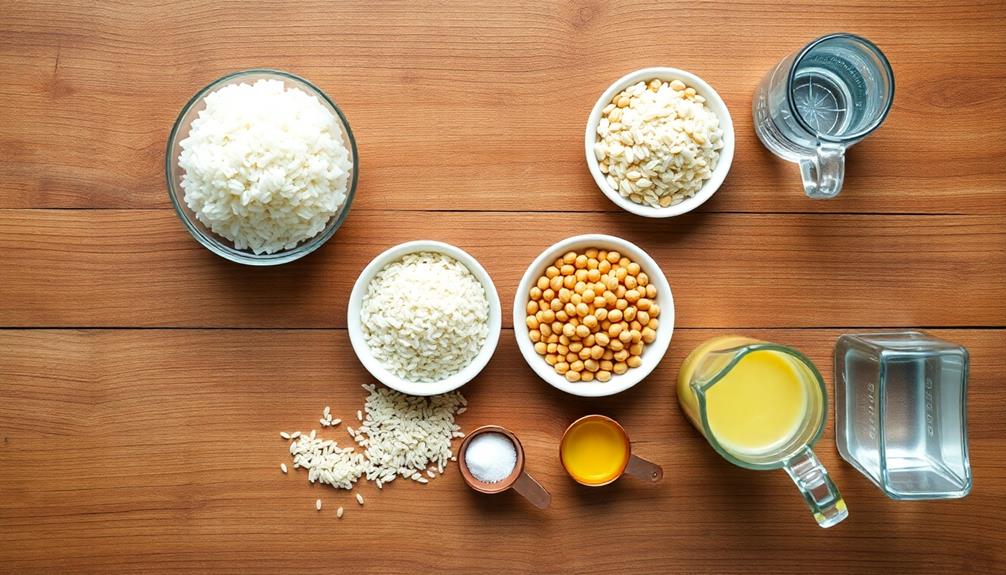
The dosa's journey begins with an essential step: soaking the rice and lentils overnight. You'll want to start this process the evening before you plan to make your dosas.
First, measure out your rice and lentils according to your recipe. Usually, you'll need about 3 parts rice to 1 part lentils. Rinse them thoroughly in cold water until the water runs clear. This helps remove any dust or impurities.
Next, place the rice and lentils in separate bowls. Cover them with plenty of cool water, making sure they're fully submerged. You'll notice the grains start to absorb the water right away. Let them soak for at least 4-6 hours, but overnight is best.
This soaking time is crucial as it softens the grains and makes them easier to grind later. It also helps your dosas become light and crispy.
In the morning, you'll see that the rice and lentils have swollen up. Drain the water, and they're ready for the next step in your dosa-making adventure!
Step 2. Grind Soaked Ingredients Into Batter
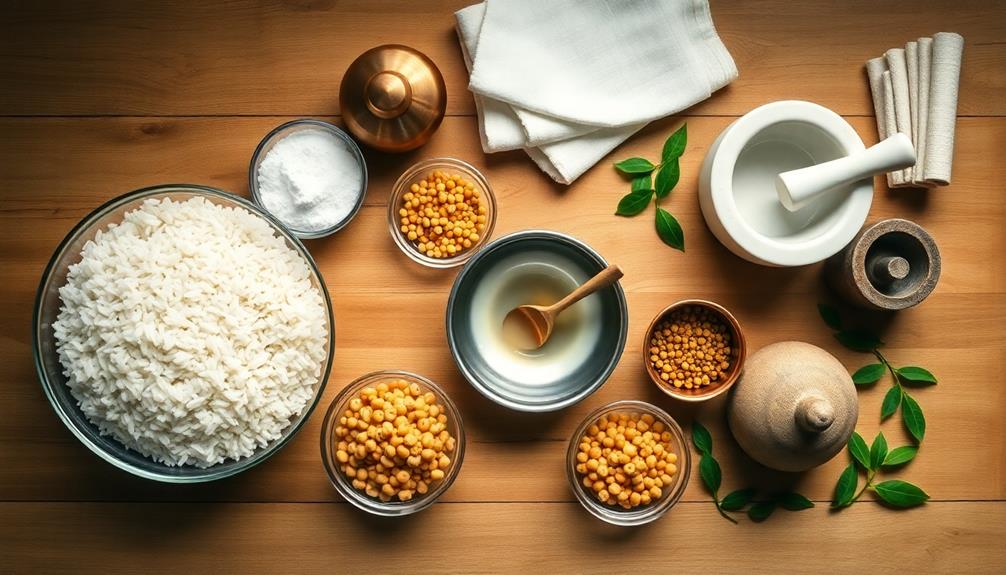
After soaking, it's time to transform your rice and lentils into a smooth batter. You'll need a blender or a wet grinder for this step.
First, drain the soaked ingredients and give them a quick rinse. Then, add them to your blender or grinder. It's best to work in small batches to ensure a consistent texture.
Start blending on low speed, gradually increasing as the ingredients break down. You'll want to add water little by little to help create a smooth consistency.
Keep blending until you've got a silky, pourable batter. It should be slightly thicker than pancake batter but not too runny. Don't worry if it takes a few minutes to get it just right!
Once you're happy with the texture, pour the batter into a large bowl. You might notice some tiny bits of rice or lentils, but that's okay.
They'll add a nice texture to your dosas. Now, you're ready for the next exciting step in your dosa-making adventure!
Step 3. Ferment Batter Until Bubbly
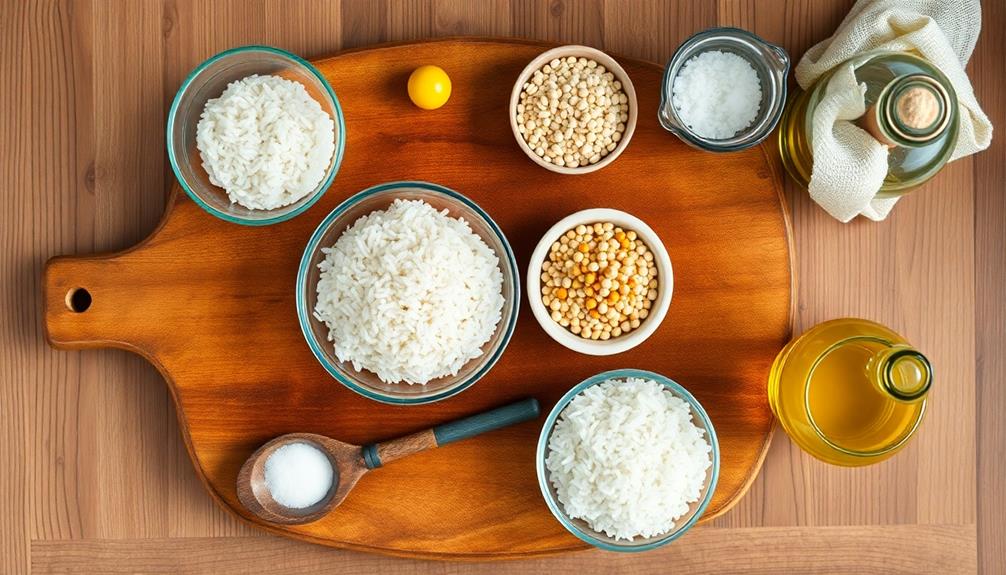
Now that you've blended your batter to perfection, it's time for fermentation – a key step in achieving that signature dosa flavor and texture.
Pour your batter into a large, clean bowl and cover it with a clean cloth or lid. Find a warm spot in your kitchen, like near a sunny window or on top of your refrigerator, to place the bowl.
Let the batter sit undisturbed for about 8 to 12 hours, or overnight. During this time, natural yeasts and bacteria will work their magic, causing the batter to rise and develop tiny bubbles.
You'll notice a slight sour smell, which is perfectly normal and desirable.
After the fermentation period, gently stir the batter. It should have a light, airy consistency and a slightly tangy aroma. If you see lots of tiny bubbles on the surface, that's a good sign! Your batter is now ready to use.
If it's too thick, you can add a little water to thin it out. Remember, the fermentation process is what gives dosas their unique taste and helps them become crispy when cooked.
Step 4. Heat Griddle or Pan

With your fermented batter ready, it's time to heat up your cooking surface. You'll want to use a flat griddle or a large, non-stick pan for the best results. Place it on your stovetop and turn the heat to medium-high. Let it warm up for a few minutes before you start cooking.
While you're waiting, grab a small bowl of water and a clean cloth or paper towel. You'll use these to wipe the griddle between dosas. It's also a good idea to have a small cup of oil and a brush nearby. This will help you spread a thin layer of oil on the surface, ensuring your dosas don't stick.
Once your griddle is hot, test it by sprinkling a few drops of water on the surface. If they sizzle and evaporate quickly, you're ready to go!
Remember, the right temperature is key to getting those crispy, golden-brown dosas you're aiming for. If it's too hot, your dosas might burn, and if it's too cool, they won't cook properly.
Don't worry if it takes a few tries to get it just right – practice makes perfect!
Step 5. Pour and Spread Batter Thinly
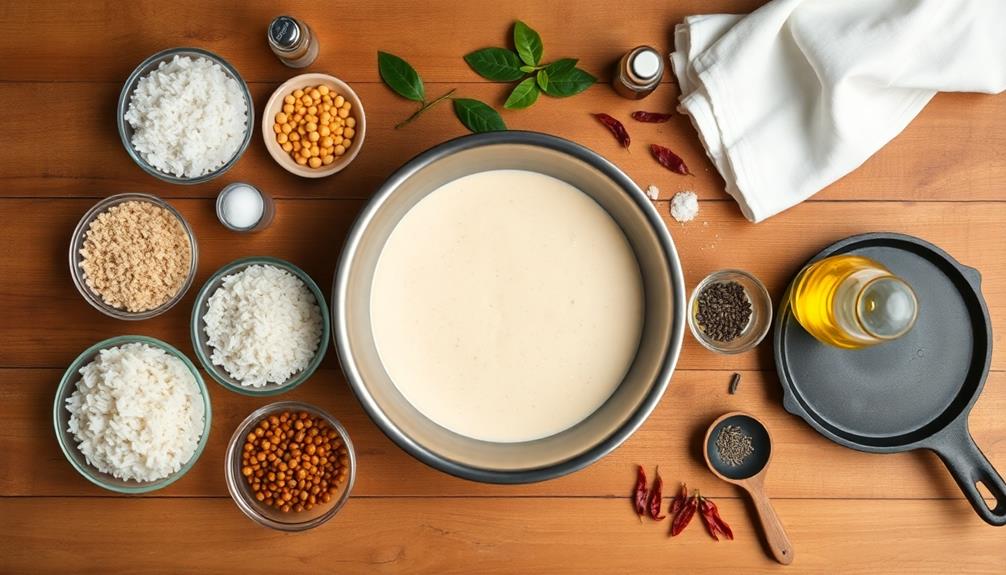
The moment of truth has arrived. It's time to pour and spread your dosa batter! Take a deep breath and grab your ladle. You'll want to scoop about 1/4 cup of batter for each dosa. Hold the ladle just above the center of your hot griddle or pan.
Now, here's the fun part: pour the batter in a circular motion, starting from the center and moving outward. As you pour, use the back of the ladle to gently spread the batter in a thin, even layer. Don't worry if it's not perfect at first – practice makes perfect! The key is to work quickly but steadily. You're aiming for a round shape about 8 inches in diameter.
If you notice any holes, don't panic! Just add a tiny bit more batter to fill them in. Remember, the thinner your dosa, the crispier it'll be. So, keep spreading until you're happy with the thickness.
Once you've poured and spread your batter, let it cook for about a minute. You'll see the edges start to lift and turn golden brown. That's when you'll know it's ready for the next step!
Final Thoughts
Although dosas have gained popularity worldwide, their true essence lies in their South Indian roots. You'll find that making dosas at home can be a rewarding experience, connecting you to centuries of culinary tradition.
Don't be discouraged if your first attempts aren't perfect – practice makes perfect! Remember, the key is to get that crispy texture and golden-brown color.
As you become more comfortable with the basic recipe, you can start experimenting with different fillings and toppings. Try adding grated vegetables to the batter or serving your dosas with various chutneys and sambar.
You'll soon discover your favorite combinations.
Dosas aren't just delicious; they're also a healthier alternative to many other breakfast options. They're naturally gluten-free and low in calories, making them a great choice for people with dietary restrictions.
Frequently Asked Questions
Can Dosas Be Made Gluten-Free?
Yes, you can make gluten-free dosas. They're naturally gluten-free when made with rice and lentils. You'll want to ensure all ingredients and cooking surfaces are free from cross-contamination to maintain their gluten-free status.
How Long Can Dosa Batter Be Stored in the Refrigerator?
You can store your batter in the fridge for up to 3-4 days. It'll ferment slowly, enhancing flavor. Stir before use. For longer storage, freeze it for up to a month. Always check for spoilage before using.
What Are the Best Side Dishes to Serve With Dosas?
You'll love pairing your crispy crepes with flavorful sides. Try coconut chutney, sambar, or tomato chutney for classic combinations. For variety, serve potato masala, vegetable kurma, or spicy lentil soup. Don't forget a pat of butter!
Are Dosas Healthy and Nutritious?
You'll be pleased to know they're generally healthy and nutritious. They're low in calories, rich in carbohydrates, and provide some protein. However, their nutritional value can vary depending on the ingredients and cooking method you use.
Can Dosas Be Frozen and Reheated Later?
You can freeze dosas for later use. They'll keep well for up to a month. When you're ready to eat, simply thaw and reheat them in a pan or microwave. They'll taste best when reheated on a griddle.
